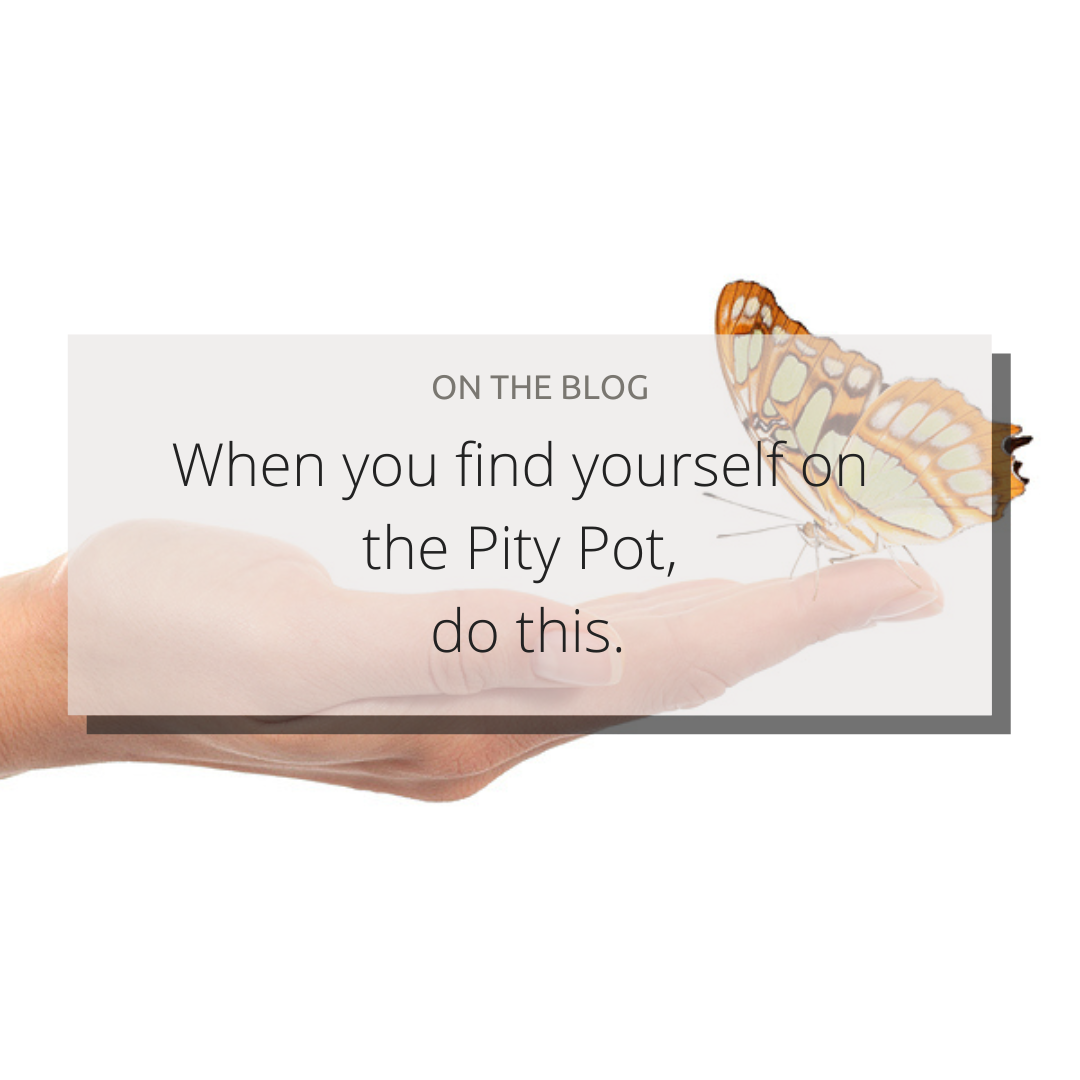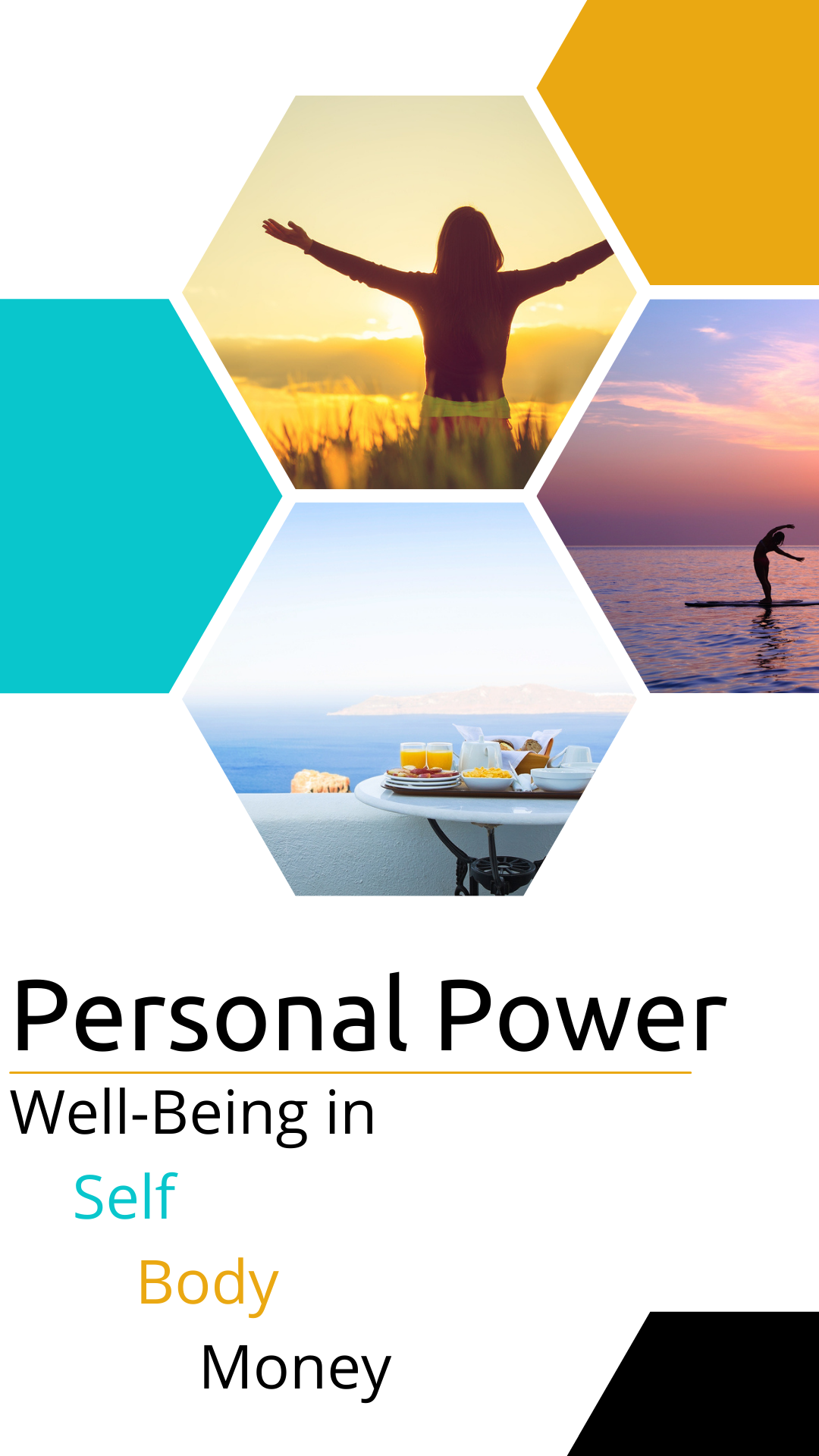
When you find yourself on the Pity Pot, do this.
KEY TAKEAWAY: Gratitude is a powerful tool we all have at our disposal to reframe the lens through which we view life situations, navigate challenges with greater resilience, and build more abundance in our lives. Scroll down to the TAKE ACTION section for this week’s actionable steps.
We’ve all been there.
You know what I’m talking about—the pity pot. It’s where we can land when we’re thinking about something that is getting us down, and we feel, well, a bit sorry for ourselves.
And we may have good reason to feel that way.
Stuff happens in life that doesn’t make us feel good. We have worries, stresses, and grievances, both small and large. We get to thinking about them, and soon, we are in a negative spiral downward into the black woe-is-me abyss.
My Journey Into the Pity Pot
I was in the pity pot the other day.
Our roof needed to be replaced—tens of thousands of dollars I hadn’t planned on spending this year. The fix that was going on filled me with angst as I stewed about the old nails and material flying about doing collateral damage to another tens-of-thousands fix we had done recently on the house (also unplanned).
My mind then reached back to the last major house project where a “fix” had caused collateral damage that landed a dumpster in our driveway for over a year. Which led me to my woes of finding good help.
This then led me to worry about having to spend money on a new refrigerator because ours was making sounds as if it were in the final throes of its demise.
Soon, I was spiraling downward, mentally latching onto other gripes and griefs as I plummeted, each adding to the negative energy so that soon I was thinking about illness and death and worrying about someone very near and dear to me.
My Journey Out of the Pity Pot
Fortunately, before I got myself into a full-blown funk, I had a moment of awareness where I recognized the negative freefall I was in and that it was not doing anything except making me feel like utter crap.
And so I turned to my tools to stop the fall.
I prayed. I passed on my worries to a higher power and tried to let that be enough. However, I found myself grabbing back my worries and mentally gnawing on them.
So, I decided to go for a walk. Movement generally helps improve my mood. It helped, but I still felt down and stressed.
Then, I turned to a tool I know can help but often forget to use to tackle negative mental spirals: Gratitude.
The thing with gratitude is that it can sound too pat, too simple, too Pollyanish to be effective.
But it works.
And it worked to get me out of my negative spiral.
Not only that, but it put me in great spirits. I started to feel not just better but upbeat!
I started by saying I’m thankful I even have a roof to fix.
I am grateful I even have a home to worry about repairing.
I am thankful that I even have the funds to worry about spending on such repairs.
And on and on until I reached the fear closest to my heart, which was about my loved one, to which I said I am incredibly grateful to have someone I love so deeply to be concerned about.
Gratitude = Perspective
The more I added to my list, the more I realized how true it was.
I was incredibly grateful for all those things and more. I felt incredibly lucky. And while it didn’t change the fact that there were situations I wished didn’t exist, it put them into perspective.
It got me back to recognizing what was truly meaningful and for which I felt grateful. Including the fact that I was thankful to be alive and of sound mind and body to tackle all that was on my plate, good and not-so-good.
Backed By Research
Gratitude is a powerful tool, and it’s not just me saying that.
Research shows that practicing gratitude — whether through a daily gratitude journal, prayers, or another habit of giving thanks for all we have and are — can benefit us psychologically and physically, improve our relationships, and boost our self-esteem.¹
In fact, gratitude is one of the most life-enhancing, transformative, and powerful tools at our disposal. So, like the many other high-energy, self-supporting tools we have—like SDASU/meditation and exercise—when it comes to using these tools, the question is not “Why?” but “Why not?”
WAYS TO PRACTICE GRATITUDE
In addition to using gratitude, as I did above to help break negative thought spirals and change the lens through which we view life and different situations, we can boost our general well-being by establishing a regular gratitude practice. Following are a few ways to build your practice.
Helpful Habit #1: Establish a daily gratitude practice.
Practice gratitude in some way, shape, or form daily. Whether through gratitude journaling, where you write daily in a journal about what you’re thankful for and what gave you joy or a sense of appreciation that day, prayer, meditation, or other practice, make space in each day to give thanks. For example, I have a gratitude prayer I do every morning, often when I’m exercising or before meditation. Some people like to write in their journals at the end of the day a few things for which they are most thankful. Find what works best for you.
Helpful Habit #2: Make a list.
In addition to your daily gratitude practice, get in the habit of recognizing the abundance that is all around you. A great way to do this is to mentally list everything you are grateful for in your life and around you, similar to what I did above when caught in my negative mental freefall. If you need help, consider the following things:
Your health. Your safety. The opportunity to open your eyes, greet a new day, and engage in life. Your ability to hear the birds singing. The people in your life. The roof over your head and the food on your plate. Your ability to love, learn, and grow. Your ability to read. The taste of chocolate and your ability to savor it. The chance to give a hug and receive one. The money in your pocket. Fresh air. Clean water. Indoor plumbing. Electricity. Your job and the income you earn. This beautiful blue planet that provides such a miraculous home that sustains and nurtures you. The sun. The moon. The stars.
The list can be—and is—endless. By trying to list it all mentally, you’ll see just how much abundance there is to be grateful for in your life and all around you. However, if you have difficulty finding something to be thankful for, then try out the following questions:
-
What would you want to give up? Consider the items I listed above. Consider everything you can do, have, and enjoy in your life. What would you want to relinquish? It’s easy to take for granted what we have, so it can be a good exercise to consider how we would feel if we had to give something up, whether a material item, an ability, a freedom, or something else. So, in other words, what are you thankful for and would hate to lose?
-
Who do you take for granted? Consider all the people who touch or have touched your life. How would you feel if they weren’t or hadn’t been in it? How would you or your life be different?
We often take for granted what we have and focus more on what we don’t have or find lacking. Yet, when we get out of that take-for-granted, see-less-vs-more habit and invite gratitude into our lives, we can experience greater abundance in how we feel and what we have. The more we practice gratitude, the more we will find we have to be grateful for. Gratitude creates abundance.
Helpful Habit #3: Create a habit of saying thank you throughout your day.
Invite gratitude into your life by establishing the habit of giving thanks as you go about your day. Say a mental thank you as good things happen, no matter how small. When you hit a green light, say thank you. When the sun breaks through the clouds, say thank you. When you have that first sip of coffee in the morning, say thank you. When your bed gives you a soft place to sleep, say thank you. When someone gives you a genuine, look-in-your-eye smile that warms your heart, say a silent thank you. When someone does something for you or just because, say thank you.
FINAL THOUGHTS
Whatever gratitude practice you choose, you don’t have to dedicate much time to it to feel its benefits. Whether you do it in the morning when you wake up, at night when you go to bed, or sometime in between—including on-demand when you’re stuck in a negative spiral—getting in the habit of using gratitude will benefit you. It will help you navigate life challenges with greater resilience. It will help you shape in a positive way the lens through which you view life and life situations.
After all, our present situation doesn’t have to be how we wish it would be for us to find something to be grateful for. No matter when or how we practice gratitude, giving thanks for all we have, are, and what is—big and small—can bring greater abundance into our lives.
TAKE ACTION:
Invite greater abundance and perspective into your life by practicing gratitude.
- Practice gratitude by creating a daily gratitude practice to dedicate time and space to give thanks.
- Practice gratitude by seeing the abundance that exists by mentally listing all the things and people you are thankful for in your life.
- Practice gratitude by getting in the habit of, as your day progresses, saying a mental thank you for anything, big or small, that comes up and for which you feel grateful.
- Use gratitude to help break negative mental spiraling by focusing on what about the situation you can be thankful for or learn from.
References:
1: Morin, Amy (2014, November 23). 7 Scientifically Proven Benefits Of Gratitude That Will Motivate You To Give Thanks. Forbes. Retrieved from https://www.forbes.com/sites/amymorin/2014/11/23/7-scientifically-proven-benefits-of-gratitude-that-will-motivate-you-to-give-thanks-year-round/?sh=2efe5662183c
IMPORTANT: The information provided is for educational and informational purposes only. It is not intended to be a substitute for professional advice, diagnosis, or treatment. Always seek the advice of a qualified professional with any questions you may have regarding the topics discussed here as the topics discussed are based on general principles and may not be applicable to every individual.
Leave a Comment below: Any insights, experiences or comments you’d like to share on this topic? I’d love to hear from you. Just hit “Comment” and share away!
Inspiration & information delivered to your inbox.
Receive FREE information, inspiration & support to help you feel more fulfilled, energized, and financially empowered in your life. Unsubscribe at any time.

0 Comments